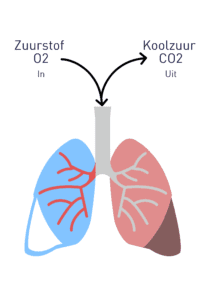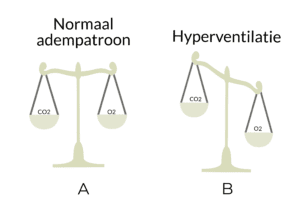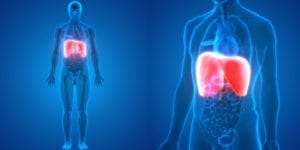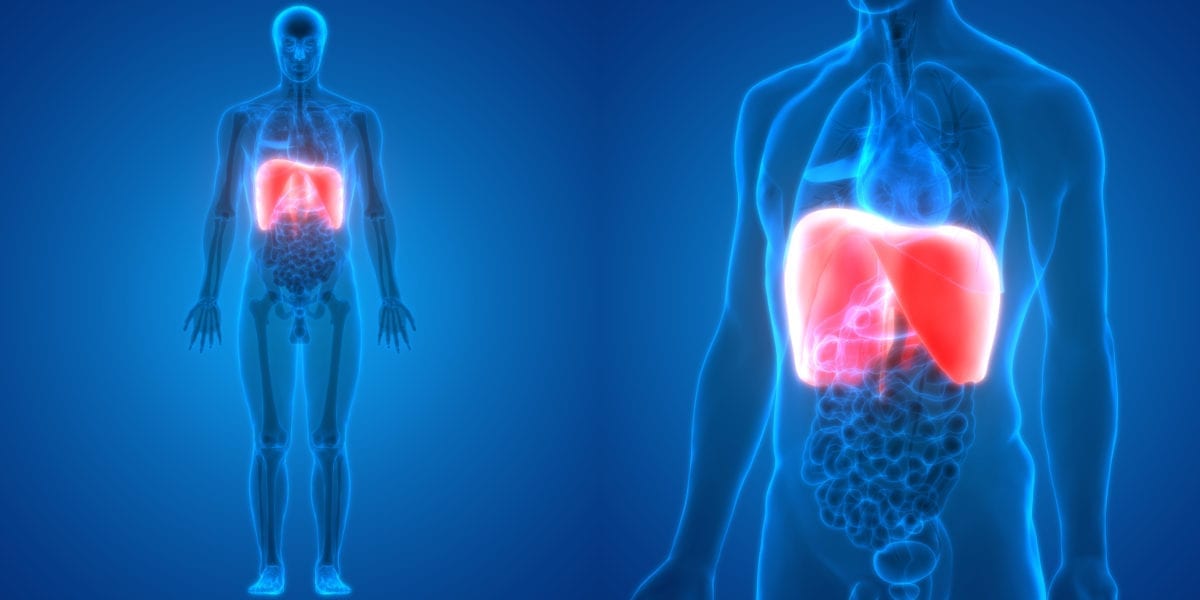Ademhaling voor hardlopers deel 1
Als hardloper of sporter weet je dat kleine problemen kunnen leiden tot prestatievermindering of moeite met de training. Denk hierbij aan steken in de zij, een inefficiënte hardloophouding of -techniek, regelmatig terugkerende blessures, snel verzuren of lichamelijke vermoeidheid. Bij Running Solutions weten we nu dat veel van deze klachten kunnen ontstaan door een probleem met de ademhaling. Oftewel, het zou kunnen dat jouw manier van ademen je weerhoudt het maximale uit je trainingen en wedstrijden te halen.
Ademhalen is niet zo vanzelfsprekend als je misschien zou denken. Om te weten of je op de juiste manier ademt is het belangrijk om de functie van de ademhaling goed te begrijpen, evenals de gevolgen van een ademhalingsdysfunctie.
In dit artikel leggen we uit hoe de ademhaling werkt én geven we je de tools om zelf te controleren of je ademhaling wel of niet goed gaat.
De functie van ademhaling
De ademhaling zorgt ervoor dat er zuurstof (O2) het lichaam in komt en koolstofdioxide (CO2) het lichaam verlaat. (zie afbeelding 1) Dit proces gaat vanzelf en hier denk je dan ook niet bewust over na.

Pas op moment dat er problemen ontstaan bij de ademhaling, merk je hoe belangrijk deze functie is.
Als je bijvoorbeeld een aanval van hyperventilatie krijgt en snakt naar adem, of als de zijsteken tijdens het sporten zo heftig worden dat je nauwelijks voldoende zuurstof binnen krijgt, voel je de noodzaak van goed ademen pas goed.
Deze situatie is schematisch weergegeven in afbeelding 2. In een normaal ademhalingspatroon (afbeelding 2A) is er een balans tussen O2 en CO2. Op moment dat er opgemerkt of onopgemerkt hyperventilatie plaatsvindt, verandert de balans tussen O2 en CO2. Door het overmatig uitademen daalt het CO2 gehalte in het bloed (afbeelding 2B). Dit gebeurt in rust, maar ook tijdens inspanning. CO2 is een afvalstof bij het maken van energie. Als het lichaam zich inspant,
zal het dus meer CO2 produceren. Om de balans met O2 te behouden ga je als vanzelf sneller ademen. Als je echter overmatig gaat in- of uitademen breng je de weegschaal weer uit balans en kom je in de problemen.
Veel sporters hebben problemen met de ademhaling zonder dat ze zich daar bewust van zijn. Deze problemen kunnen zich zowel tijdens inspanning als in rust voordoen. We spreken dan van een ademhalingsdysfunctie.
Ademhalingsdysfunctie
Ademhalingsdysfunctie is een verzamelnaam voor problemen met de ademhaling waarvoor geen directe oorzaak in het lichaam gevonden kan worden. De ademhaling reageert verkeerd op een stress- of sportprikkel. Dit kan bijvoorbeeld een verhoging van de ademhalingsfrequentie zijn zoals hierboven beschreven en/of het verkeerd gebruik van spieren die de ademhaling ondersteunen.

Bij een verhoogde ademfrequentie kan er sprake zijn van hyperventilatie. Tijdens inspanning of stress is dit probleem goed te herkennen, aangezien er geen controle is over de ademhaling. Hyperventilatie is echter vaak ongemerkt aanwezig, zowel in het dagelijkse leven als in de sport. Dit kan grote gevolgen hebben voor het lichaam.
Symptomen van hyperventilatie kunnen zijn: een versnelde ademhaling, niet diep kunnen inademen, druk op de borst, lucht tekort, onregelmatige hardslag, duizelingen, hoofdpijn, tintelingen in het gezicht of de ledematen, verhoogde spierspanning, verhoogde druk in de buik, slechte houding van de romp en meer. Hoeveel symptomen herken je zelf?
Als een verkeerd adempatroon een gewoonte is geworden, dan spreken we van chronische hyperventilatie. Dit kan betekenen dat je bijvoorbeeld in rust teveel in- en uitademt of tijdens inspanning je ademhaling niet onder controle hebt. Beide kunnen leiden tot verslechterde prestaties. Daarnaast kan hyperventilatie leiden tot sportblessures, zoals lage rugklachten, spierspanning, pijn in het bovenlichaam of spierkrampen. In het volgende blog gaan we hier dieper op in.
Hoe adem jij?
Bij het ademhalen gebruiken we verschillende spieren. Een belangrijke ademspier is het diafragma, de spier onder de longen die de longen en daarmee de ademhaling ondersteunt (afbeelding 3).
Samen met de buikspieren coördineert het diafragma de ademhaling. Daarnaast verzorgen deze spieren een groot deel van de stabiliteit van de wervelkolom. Dit is enorm belangrijk voor hardlopers. Als de controle over deze spieren niet goed gaat, kunnen ze hun stabiliserende taak niet goed uitvoeren. De wervelkolom komt

hierdoor onder druk te staan.
Bij ademhalingsdysfunctie wordt het diafragma onvoldoende gebruikt. De ondersteunende spieren in de nek, schouders en borst worden dan overmatig actief ingezet. Zo ontstaat er een patroon waarbij je voornamelijk kort en hoog in de borst ademt, in plaats van rustig en diep. Het ademen kost meer energie en is lastiger vol te houden.
Om gecontroleerd te ademen moet je dus voornamelijk het diafragma goed gebruiken, zowel in rust als tijdens het sporten. De ondersteunende spieren in nek, schouders en borst heb je alleen tijdens het sporten nodig.
Test jezelf!
Er zijn twee testen die je zelf kunt uitvoeren om erachter te komen of je een ademhalingsdysfunctie hebt.
Test 1: Nijmeegse vragenlijst voor hyperventilatie
Vul deze vragenlijst van 19 vragen in. Bij een score van meer dan 18 punten is er een verhoogde kans op een hyperventilatiepatroon. Bij 23 punten of meer is deze kans zelfs 80%.
Test 2: Hi Lo test
Plaats één hand op je buik, net onder je ribben en de andere hand op je borstbeen. Als je inademt en het borstbeen eerder beweegt dan je buik is de kans groot dat je een ongunstig adempatroon hebt ontwikkeld.
Zie deze video voor instructie
